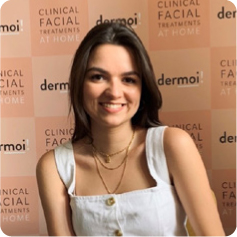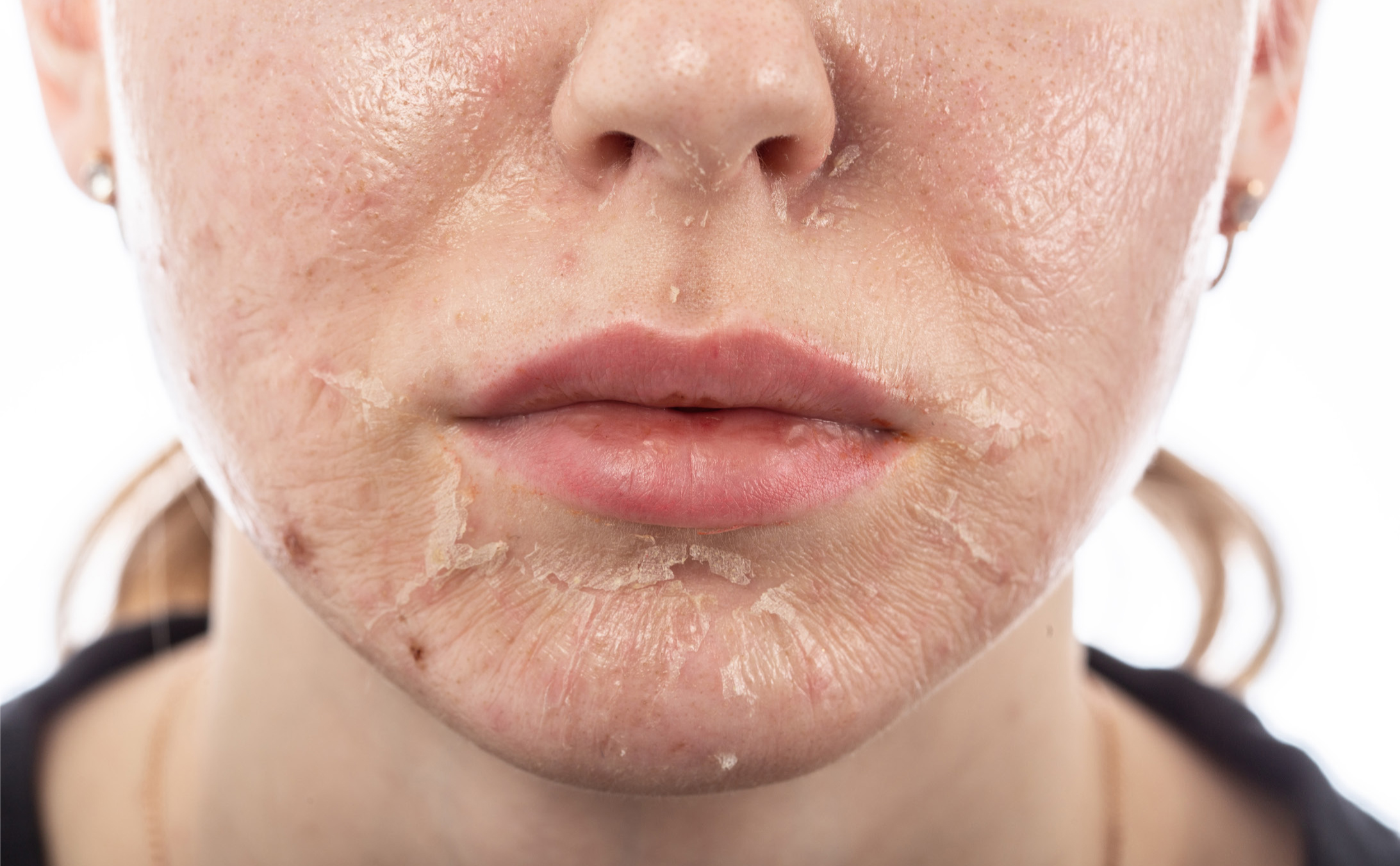
Non-invasive aesthetic facial treatments provide viable alternatives to invasive facial treatments for rejuvenation and the correction of skin discolouration, texture, lines, wrinkles and sagging caused by photoageing, intrinsic ageing and skin conditions. They are widely available and have gained popularity in skincare regimes, as they often have minimal healing time (downtime) and discomfort and can be inexpensive. However, the desire for a youthful and ‘picture perfect’ appearance prompts many to seek ‘quick fixes’ and instant results with aggressive non-invasive facial treatments. While this approach may provide instant gratification, it can lead to adverse events and have negative consequences for skin health over time. This article aims to briefly discuss five commonly practised non-invasive facial treatments and their relationship with skin health. Specifically, it will discuss microdermabrasion, hydradermabrasion, chemical peeling, dermaplaning and microneedling.
Microdermabrasion
Microdermabrasion is a non-invasive, superficial physical exfoliation procedure that removes the skin barrier (El-Domyati et al, 2016). It is used to resurface the skin and stimulate subsequent rejuvenation via wound healing responses (Shah and Crane, 2021). There are two types of microdermabrasion: crystal microdermabrasion, which involves a closed loop negative pressure system and deposition of crystals (aluminium oxide, sodium chloride, magnesium oxide or sodium bicarbonate) into the skin, and crystal-free microdermabrasion, which involves resurfacing with an abrading tip, such as diamond or bristle (Haney, 2020; Shah and Crane, 2021).
There is conflicting evidence surrounding the efficacy of microdermabrasion in improving hyperpigmentation (Shim et al, 2001; Alam et al, 2002; Bhalla and Thami, 2006; Karimipour et al, 2010; El-Domyati et al, 2016), collagen and elastin density (Alam et al, 2001; Freedman et al, 2001; Shim et al, 2001; Tan et al, 2001; Tehrani, 2006; El-Domyati et al, 2016), scarring (El-Domyati et al, 2016), and acne (Shim et al, 2001). However, in most cases, the best results with microdermabrasion are observed with a series of three to six treatments that are separated by 1–2-week intervals (El-Domyati et al, 2016; Haney, 2020; Shah and Crane, 2021).
As microdermabrasion is often performed as a series of treatments, consistent removal of the skin barrier is endured. This compromises skin barrier function, which weakens the immune system and microbiome of the skin and leaves the skin sensitive to premature ageing from environmental-free radicals, ultraviolet (UV) radiation and post-inflammatory hyperpigmentation (El-Domyati et al, 2016; Shah and Crane, 2021). Additionally, crystal microdermabrasion is associated with a risk of corneal irritation (El-Domyati et al, 2016). It is likely that those suffering with common inflammatory skin conditions may experience temporary worsening of their condition and adverse events.
Hydradermabrasion
Hydradermabrasion is a crystal-free microdermabrasion technique that combines an abrading tip (physical exfoliation) alongside the pneumatic application of topical skincare serums (Kim et al, 2015). Many common hydradermabrasion procedures combine hydradermabrasion with a chemical peeling serum, followed by pressure (vacuum) extraction and an antioxidant rich serum.
It has been reported that hydradermabrasion in combination with 4% solution of lactic acid and glycolic acid reduced the number of open and closed comedones and improved skin sebum levels (Kim et al, 2015). There were no long-term adverse events in this study; however, exclusion criteria contained subjects with sensitive skin, hypersensitive skin and atopic dermatitis (Kim et al, 2015). Hydradermabrasion combined with polyphenolic-based antioxidant serum in a series of treatments with 7–10-day intervals revealed facial rejuvenation with thickening of the epidermis and papillary dermis (Freedman, 2008).

While hydradermabrasion is gentler than traditional microdermabrasion, the technique itself abrades the skin barrier and could be sensitising for many. Furthermore, many procedures involve multiple passes over the skin with a hydradermabrasion device and vacuum extraction, which may increase certain issues, such as post-inflammatory hyperpigmentation, textural scarring and premature ageing, especially if adequate aftercare is not followed. Lastly, the use of hydradermabrasion in combination with alpha hydroxy acid solutions, followed by hydradermabrasion with antioxidant serum, has not been evaluated for efficacy or complications.
Chemical peels
Chemical peels are ablative treatments that use chemical agents (alpha hydroxy acids and beta hydroxy acids) to induce controlled wounding of the epidermis and dermis for cosmetic skin improvements. This controlled wounding is followed by regeneration of the skin and remodelling of the epidermis and/or dermis (O'Connor et al, 2018). Chemical peels are categorised based on their penetration depth. Superficial chemical peels act in the epidermis and/or the epidermal interface and can induce partial or complete epidermolysis (O'Connor et al, 2018; Lee et al, 2019). Medium-depth chemical peels penetrate the papillary dermis and the upper reticular dermis, while deep chemical peels penetrate to the mid-reticular dermis (O'Connor et al, 2018; Lee et al, 2019).
For decades, chemical peels have been used to improve a variety of skin concerns, such as acne, melasma and many signs of photoageing. However, medium-depth chemical peels induce protein precipitation and subsequent necrosis of skin tissue, while deep chemical peels denature keratin and dermal proteins alongside complete epidermolysis (O'Connor et al, 2018). For medium-depth chemical peels, re-epithelisation of the epidermis requires 7 days of care at home, while deep chemical peels require 2–3 weeks (O'Connor et al, 2018). Such procedures carry the risk of long-term erythema (up to 3 months) (O'Connor et al, 2018), and patients must shield from the sun with strict aftercare, as the skin is extremely vulnerable to infection, post-inflammatory hyperpigmentation, hypopigmentation and scarring if not healed properly (O'Connor et al, 2018). Medium-depth and deep chemical peels are often recommended as one-off procedures; however, many seek the treatments regularly, which causes repeated trauma to healthy skin structure and microbiome.
Dermaplaning
Recently, dermaplaning has become a viral skincare trend that is used at home and in skin clinics. Dermaplaning involves using a scalpel to remove upper layers of the skin for mild resurfacing (Pryor et al, 2011). It has gained popularity, as shaving the skin removes fine hairs (peach fuzz) and provides an instantly smoother skin surface (Pryor et al, 2011).
There is scarce scientific evidence discussing the efficacy of dermaplaning or its complications (Pryor et al, 2011). Dermaplaning is being normalised for at home and consistent use; however, repeated thinning and, in some cases, removal of the skin barrier can leave the skin vulnerable to extensive damage from UV radiation, free radicals and inflammation. As the procedure involves the use of a blade, there is the risk of bleeding and subsequent infection. Those suffering with underlying inflammatory skin disorders (for example, acne, rosacea or eczema) are particularly at risk for worsening of their condition and adverse events.
Microneedling
Microneedling, also known as percutaneous collagen induction therapy, involves inserting an array of sterilised needles into the skin to create miniature wounds in the epidermis and papillary dermis (Aust et al, 2008; Iriarte et al, 2017). This generates and releases a cascade of growth factors, allowing for a wound healing response and subsequent production of collagen and elastin (Aust et al, 2008; Iriarte et al, 2017). Typically, the needles that are used for microneedling devices range from 0.5 mm–3 mm (Lee et al, 2016), with a needle length of 1.5mm being most commonly used in skin clinics (Römgens et al, 2014). The force of insertion, needle tip diameter and number of passes over the skin all influence the penetration depth and intensity of the treatment (Römgens et al, 2014; Atiyeh et al, 2021).
Microneedling has the benefit of being a non-ablative dermal rejuvenating treatment with minimal downtime (Aust et al, 2008; Lee et al, 2016; Iriarte et al, 2017), and it has shown to make improvements in facial scarring and photoageing (Aust et al, 2008; El-Domyati et al, 2015a; 2015b; Alster and Graham, 2018; Mujahid et al, 2020). On the other hand, the basis of microneedling relies on physical trauma and, in practice, common procedures use high pressure and speed, combined with long needle lengths and multiple passes over the skin. This intensifies wounding and can lead to adverse events, such as facial scarring (tram track scarring) (Pahwa et al, 2012; Chu et al, 2021), pigmentation irregularities (Cohen and Elbuluk, 2016; Chu et al, 2021) or infection (Aust et al, 2008; Chu et al, 2021). It should also be noted that a recent literature review by Atiyeh et al (2021) concluded that there is a limited number of high-quality studies surrounding percutaneous collagen induction therapy. The authors urged for careful interpretation and improvements of study before translation into clinics (Atiyeh et al, 2021).
» Moving away from trauma-stimulated rejuvenation and towards treatments with innovative methods of delivering high-performance active ingredients into the skin, such as retinoids, growth factors and peptides, should be considered «
Conclusion
While some may look at the risks and complications of certain non-invasive facial treatments and assume that the impact is minimal, over time, repeated use of such treatments can result in unnecessary skin traumas and a decrease in skin quality. Moving away from trauma-stimulated rejuvenation and towards treatments with innovative methods of delivering high-performance active ingredients into the skin, such as retinoids, growth factors and peptides, should be considered. This would allow for alteration of the structure and function of the skin tissue, with the potential for greater specificity in the mechanism of action. In conjunction with adequate daily skincare protection and nutraceutical supplementation, such treatments may promote longer term youthful appearances with less complications.



